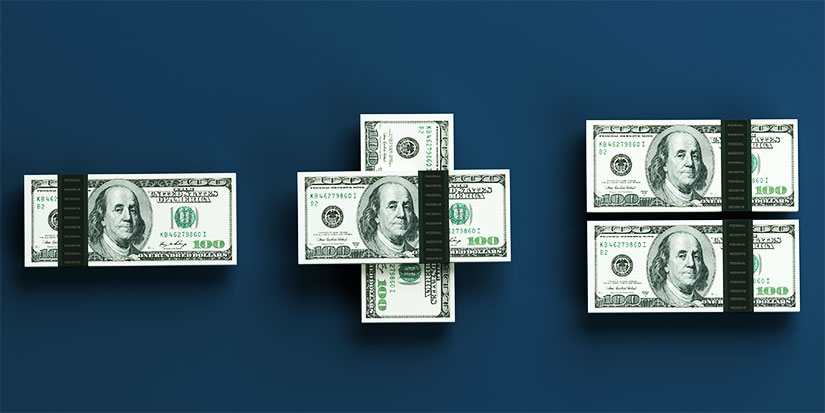As you know, I was in Las Vegas two weeks ago to speak at a conference.
Between sessions, I met up with a former colleague and we grabbed a late breakfast. It was great to catch up and talk about our outlooks for the market in 2024.
When we got our checks, we both sat doing the dreaded tip math. I’m a math nerd. I got my degree in Economics with a focus on math. I eagerly chewed through Calculus, Linear Algebra, and Statistical Analysis courses. Tip math is not that hard for me. And I never bother to look at the tip suggestions that are frequently shown on the bottom of the receipt.
My breakfast partner, however, laughed and said look at that math.
(I was going to add a picture of the receipt here, but now I can’t find it. So, you’ll just have to trust me on this one.)
It listed tip percentages and their equivalent dollar amount. Except that the amount next to 20% was nearly 30%!
I understand we were in Vegas, and I was already becoming acclimated to the additional fees being added here and there. This was blatant trickery and probably worked as overstimulated and inebriated vacationers grabbed their meals. But this isn’t the only situation where knowing your math protects your money.
The Math of the Deal
I’m not much fun to shop with because I overanalyze everything. I compare food prices by breaking them down to the per-ounce price. And then I’ll tell you if the per-ounce price on the shelf label is wrong. I even do the math on the “deals” you see at farmers markets… and sometimes you’re not actually getting the best price on those veggie bundles.
It’s not always someone being intentionally dishonest. Sometimes it’s simply because someone did the math wrong. Either way, in the end, if you can’t do the math yourself, you don’t get the best deal that you could.
And not overpaying for your stocks is all about math. This is especially true in our current market environment.
It’s easy to get swept up in the greed mentality that keeps pushing the market to record highs. That’s the FOMO (fear of missing out) psychology. It’s your ego enticing you with “What if the markets go higher and higher and I miss out completely?”
I hate to bruise your ego, but markets go up… and they go down. So, how do you know when you’re getting a good deal on a stock? Math.
There are many ways to measure stock valuation, but the simplest is the P/E ratio. Here’s the math:
The result is a number that tells you how much we are paying in relation to a company’s earnings per share. A P/E ratio of 10 says that you are paying 10X the current earnings. Or, another way to look at it is you are paying for 10 years of earnings right now.
A rough guide to judging stock valuation is be wary of P/Es over 24. Anything under 17 is worth a closer look. The historical average P/E for the S&P 500 is around 17.
Know How Hard Your Money Is Working
A concept we don’t talk much about is opportunity cost. When your money is invested in one thing, you want it to be the best opportunity. That tells you exactly how hard your money is working—your money’s horsepower.
For dividend investors, our main measure of horsepower is the annual yield percentage. Here’s the math:
We can take this one step further by calculating the yield using the share price at different times.
Using the price you paid for shares shows how hard your position is working for you—known as the effective yield. Using the current price of the stock tells you how hard your money would be working if you bought shares today—the current yield.
Comparing your effective yield to the current yield of other stocks will tell you if there is a better place for your money. It lets you spot an opportunity to make your money work harder.
Comparing the current yield of several stocks can steer you to stocks where new money will work hardest. This is exactly why I break things down to cost-per-ounce at the grocery store. We can’t compare multiple sizes and prices unless we put it in a common unit. That’s what yield allows us to do.
When I share ideas with you, I’ve already looked at the numbers and done the math. I look at other things, of course, but these are the basics. If you want my complete analysis of all my favorite stocks, check out my premium research service Yield Shark.
For more income, now and in the future,





